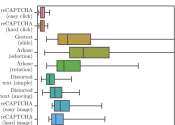A website (or web site) is a collection of related web pages, images, videos or other digital assets that are addressed with a common domain name or IP address in an Internet Protocol-based network. A web site is hosted on at least one web server, accessible via the Internet or a private local area network.
A web page is a document, typically written in plain text interspersed with formatting instructions of Hypertext Markup Language (HTML, XHTML). A web page may incorporate elements from other web sites with suitable markup anchors.
Web pages are accessed and transported with the Hypertext Transfer Protocol (HTTP), which may optionally employ encryption (HTTP Secure, HTTPS) to provide security and privacy for the user of the web page content. The user's application, often a web browser, renders the page content according to its HTML markup instructions onto a display terminal.
All publicly accessible web sites collectively constitute the World Wide Web.
The pages of a web site can usually be accessed from a simple Uniform Resource Locator (URL) called the homepage. The URLs of the pages organize them into a hierarchy, although hyperlinking between them conveys the reader's perceived site structure and guides the reader's navigation of the site.
Some web sites require a subscription to access some or all of their content. Examples of subscription sites include many business sites, parts of many news sites, academic journal sites, gaming sites, message boards, web-based e-mail, services, social networking web sites, and sites providing real-time stock market data.









